While driving, you might have experienced shaking in the steering wheel or seat. Your mechanic diagnosed the problem as cupped tires. So what are cupped tires, and what does shaking or vibration have to do with them? We asked automotive experts, and here is what they say.
Cupped tires can cause vibration. Cupped tires have uneven surfaces that are the symptoms of irregular tread wear. The tire's tread has grooves and patterns of patches. These pitted surfaces will cause the tires to have uneven contact with the road surface, thus causing vibration.
In this post, we will discuss how tire cupping causes vibration and other symptoms, the causes of cupped tires, and the ways to prevent them. Keep reading as we dig into the details of this tire issue.
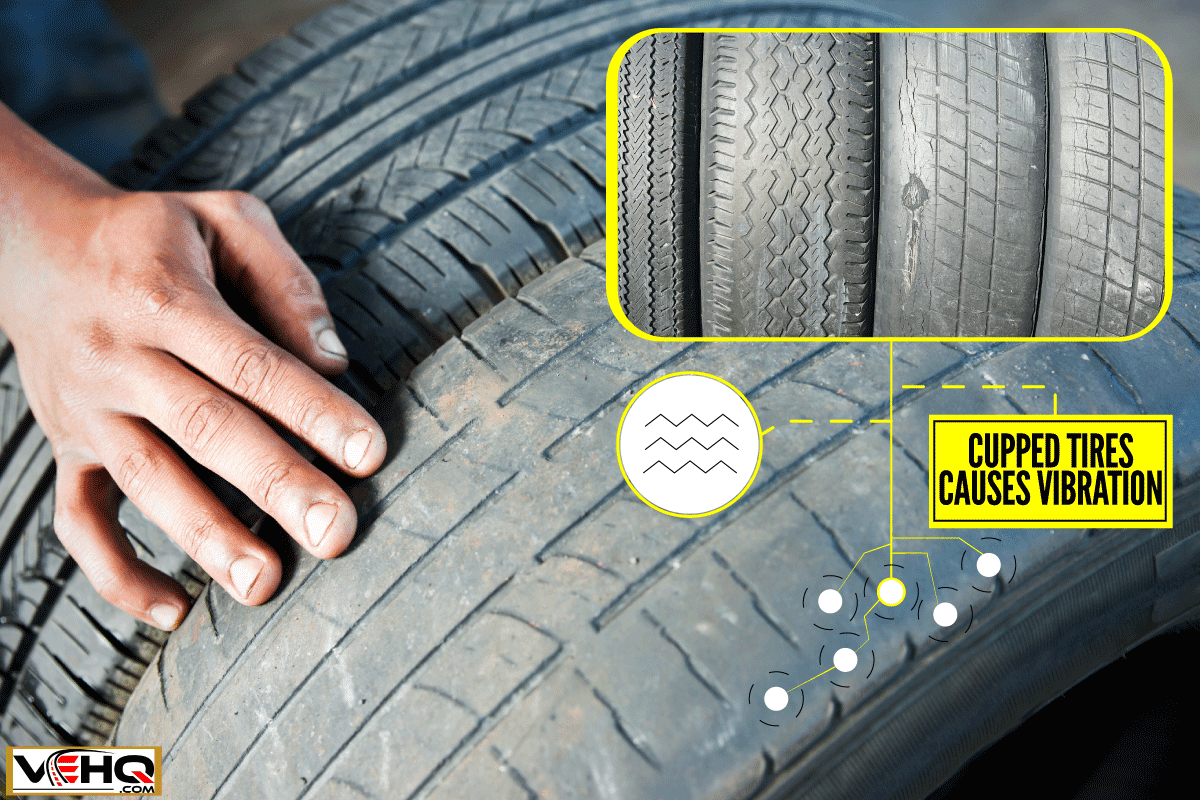
What is Tire Cupping?
Take a close look at your car’s tires. You will readily notice uneven surfaces, an obvious sign of wear and tear.
While other forms of tire wear appear at the center or the edges of the tire, what makes tire cupping different is that there are irregular high-low "cup-like" forms. As a result, they are also called scalloped tires.
The wear pattern could be seen at spots where tread wear is accelerated. This means that some areas are heavily worn compared to the surrounding tread. These are signs of uneven treadwear known as cupping.
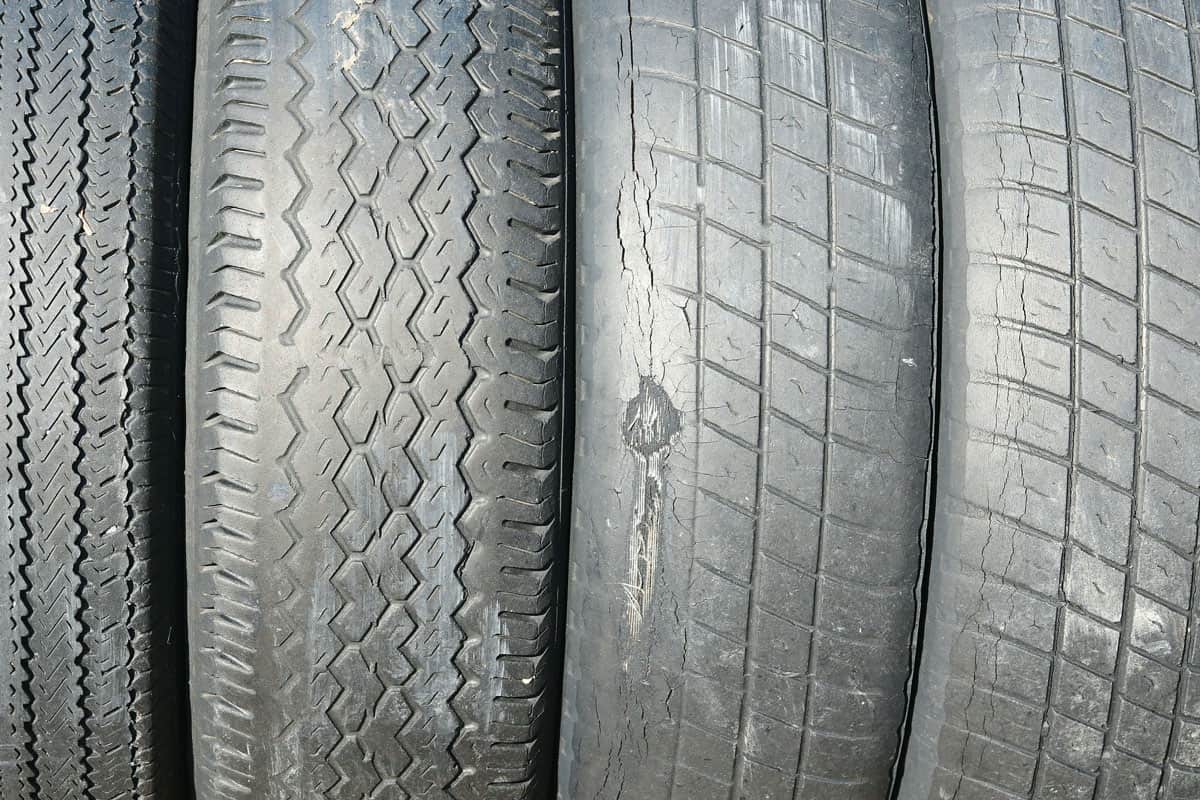
In a nutshell, tire cupping refers to uneven tire wear. The rugged exterior displays indentations or dips in the tire’s tread. This irregular pattern of patches is described by automotive as feathering, heel-toe, shoulder, centerline, wipe wear, diagonal, and more.
The dips at the tread surface appear every three to four inches running along the tire's circumference. Also, tire cupping may develop when there are changes in force against the road surface while the tire is rolling.
How Tire Cupping Causes Vibration
Tire cupping is a cause for concern in maintaining safe driving. When resolved early, it translates to more savings and helps you avoid unexpected and costly repairs.
Tires have treads designed to have smooth and sufficient traction with the road surface while driving. With the presence of patches and dips in cupped tires, this is not achieved.
Instead, the patches create an uneven tire exterior that disrupts the supposedly leveled and uninterrupted contact of the tire's tread with the road.

With cupped tires, the driver would feel a vibration or shake at the steering wheel or the seat. If the vibration is at the steering wheel, it means the front wheels are unbalanced.
If the vibration is in the seat, it means the back wheels are unbalanced. These tire imbalances point to vehicle suspension issues. These will be further discussed in a later section.
You may wish to learn more on this topic. Check out this related post:
Steering Wheel Shakes When Accelerating - What Could Be Wrong?
Are Cupped Tires Unsafe on the Road?
Tire cupping is a destructive type of tire wear. In extreme cases, the driver would feel like the car is bouncing on the road while driving. The “bouncing effect” is caused by the decreased depth at the tread at some spots of the tire's surface.
In this instance, there is a risk of reduced traction that may lead to the driver losing control of the vehicle. All-around traction and overall vehicle performance on the road are compromised. This is an irreversible stage of tire cupping, and automotive experts will tell you not push your luck!
Learn more about your car's vibration in this post: Flat Spot On Tire Causing Vibration - What To Do?
Other Indicators of Tire Cupping
Aside from vibration, there are other signs that your tire is developing cupping. We have listed them below:
Noise at the Tire
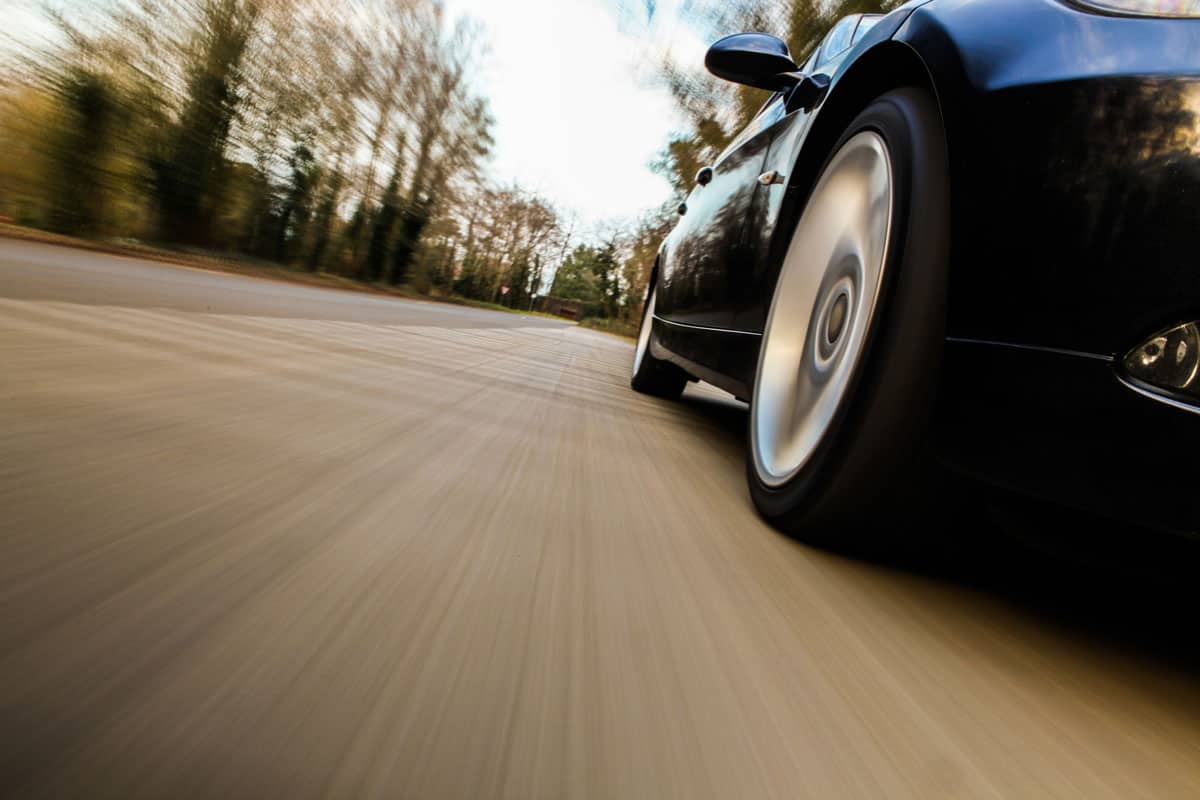
If you hear excessive rhythmic noise from your tires that gets more pronounced when you accelerate, you should have them inspected by an automotive mechanic. This is attributed to the jagged and worn patches of rubber tread that produce odd noises while rolling.
Yes, the noise at the tires could be troublesome. There could be more underlying mechanical problems. You can learn more from these posts :
Loud Humming Noise When Driving - What Could Be Wrong?
Steering Wheels Shake at High Speed - What Could Be Wrong?
Swerving While Turning
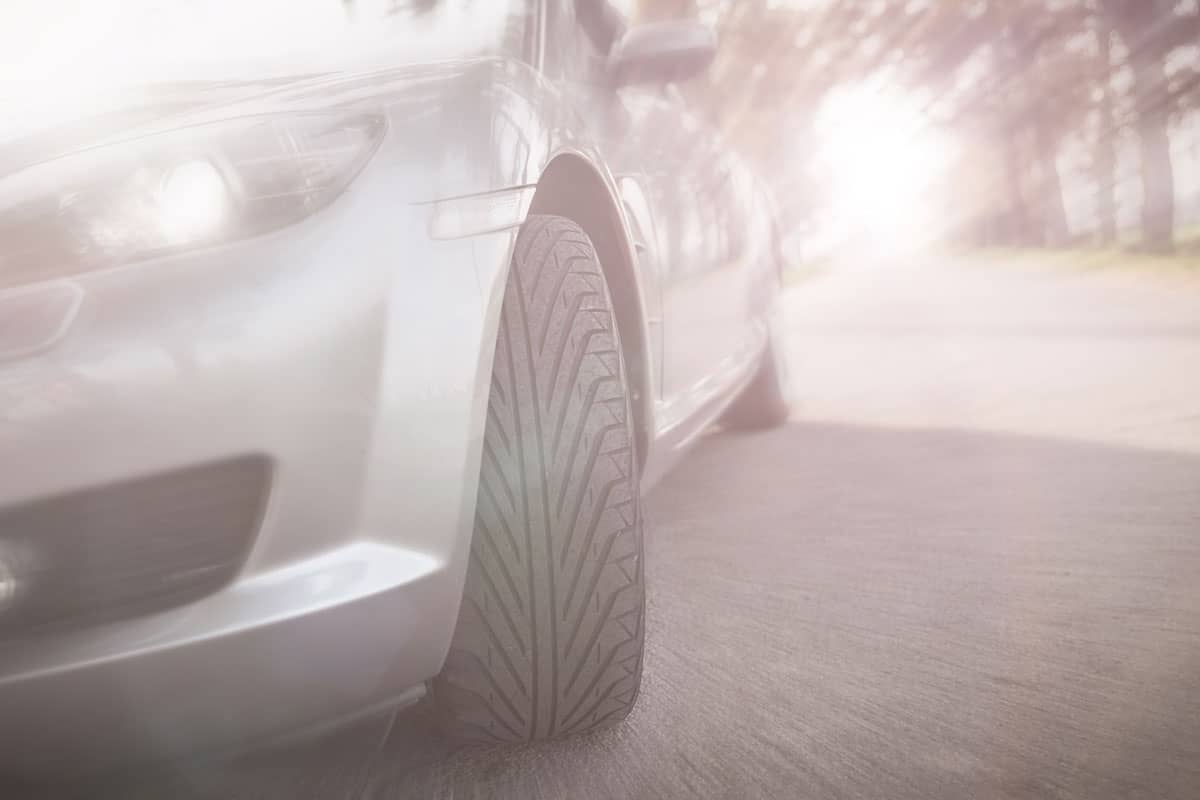
If your car behaves unpredictably when you make a turn, then you have misaligned tires. Your car will tend to drift in either direction.
This condition requires steering wheel correction. It would be best to have your tires checked by a certified mechanic.
If your car is veering away from your intended direction, even an experienced driver would lose confidence in controlling the steering wheel. Check out this post for further reading:
Steering Wheel Hard to Turn Right But Not Left - What Could Be Wrong?
Uneven Patches
After diagnosing the above mechanical issues, the next thing you should do is have a visual inspection of your tires. Another way is to try running your hand over the tire tread while your car is parked. You would then feel some high and low points along the contact patch running the tire's circumference.
You could also examine your tire while rotating it. You would notice variations in the tread block. Some grooves appear more worn than other points in the same tread block. This could signify that cupping is developing.
As earlier mentioned, you could easily notice cracks and jagged exterior of your tire's tread that run along its circumference. In this case, you might consider having a total replacement of your tires.
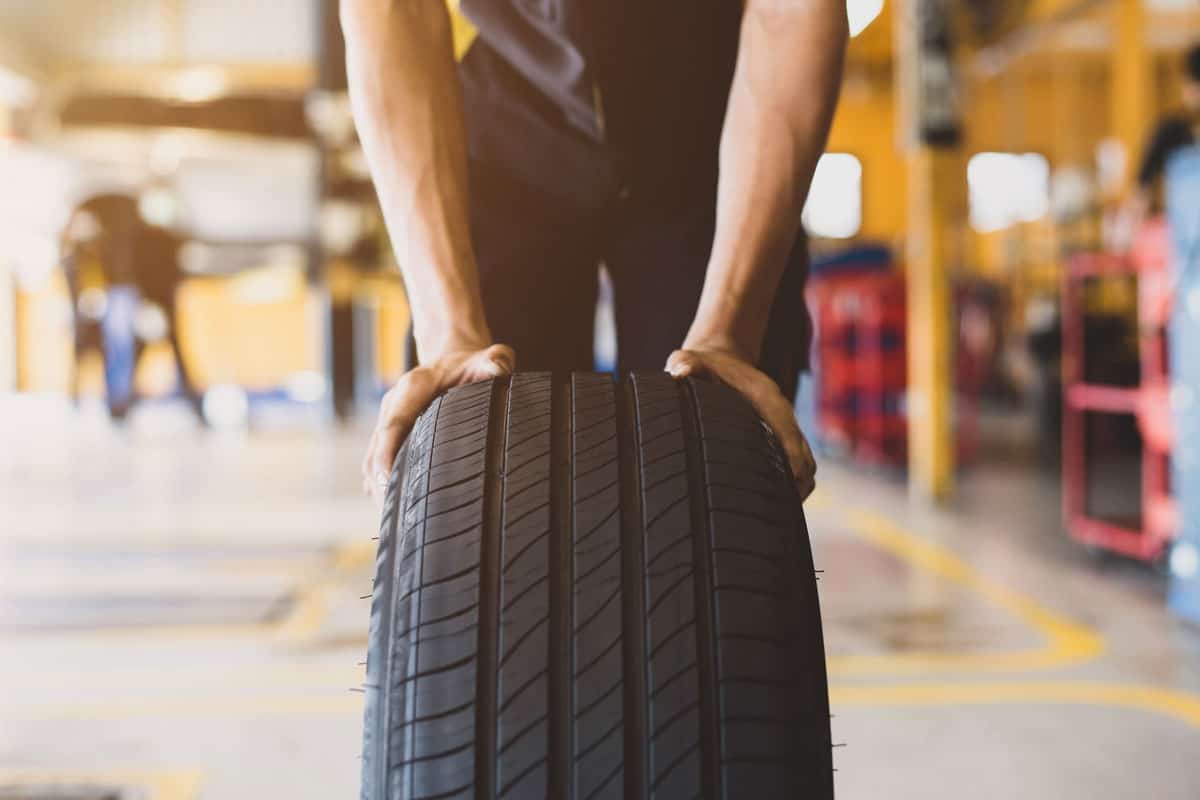
Purchasing a new set of tires? These posts could be helpful:
Does Jiffy Lube Replace Tires?
Does Tire Installation Include Alignment And Balancing?
What Causes Tire Cupping?
Tire cupping is mainly attributed to issues in the vehicle suspension. If the suspension doesn't work properly, the tire tends to work harder on the road.
It will struggle to maintain adequate force against the road surface. This is how tire cupping begins to develop.
Vehicle suspension problems that lead to tire cupping are:
Misaligned Tires
When it comes to wheel alignment, there are factory specifications. This means the tires are positioned correctly according to the factory's design.
Otherwise, the vehicle's motion is significantly affected. Tires will not roll straight while driving, causing undue strain and cupping. Misaligned tires display a sawtooth pattern at the edges of the tread, dubbed heel-toe wear.
Imbalanced Wheels
Out-of-balance tires or bent wheels are caused by uneven weight distribution across the tire's circumference.
This results in an uneven spinning since some portions of the tread touch the road with greater force than others. This is called erratic tread wear. Areas with greater force results in more wear.
Fixing unbalanced tires needs to be handled by a certified mechanic. Balancing tires can extend their serviceable life by as much as 20 percent.
Worn or Damaged Suspension
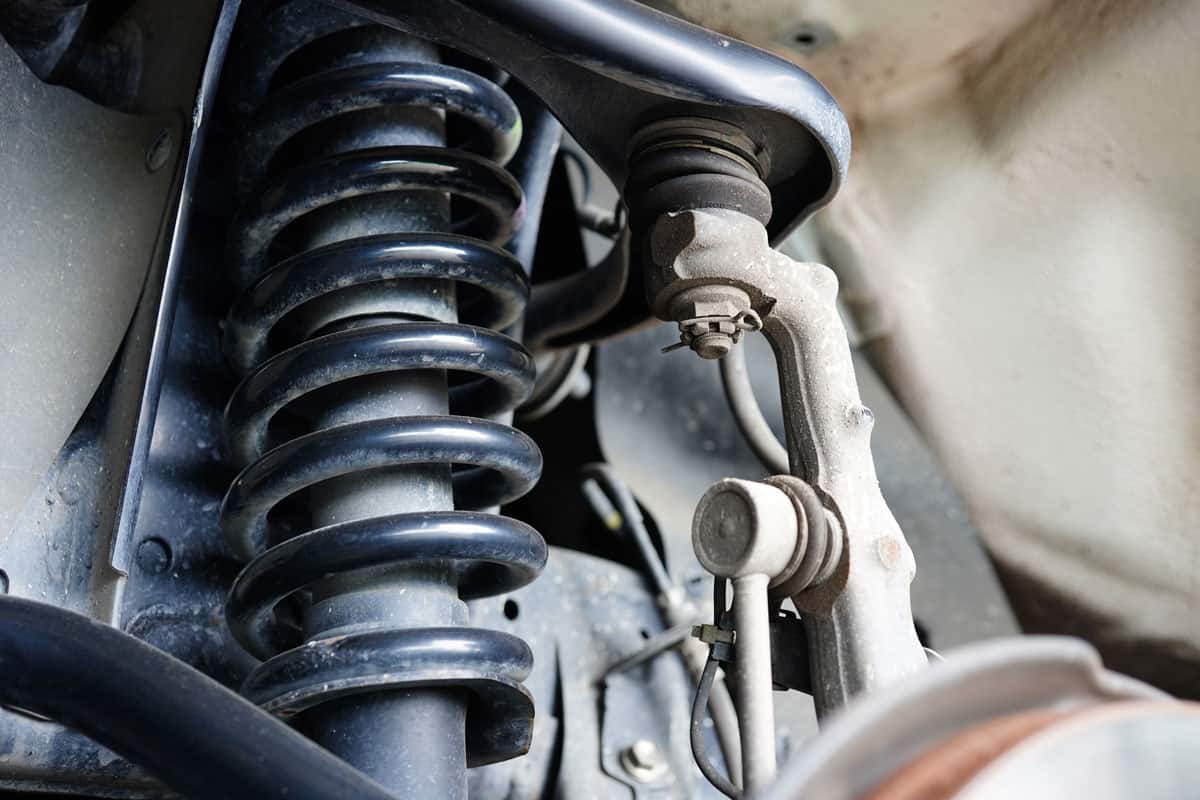
The suspension components, such as shocks and struts, are responsible for absorbing road imperfections. They control how the wheel will react to the road bumps.
If these components are worn-out or damaged, the wheels will randomly bounce. Tire bouncing on the road can cause cupping.
Tire cupping due to suspension can be an extreme case and the most visually distinct. This could also be more dangerous compared to misaligned or imbalanced tires.
Low-Quality Tires
There are so many options available in choosing tires for your car. The expensive ones consist of quality materials.
On the other hand, due to budget constraints, you may be tempted to choose low-priced ones with low-quality materials. With cheap tires, the steel belts provide less tread support, and the quality of the rubber wears out faster.
If you get cheap tires and your suspension gets damaged for whatever reason, then tire cupping is the next thing to happen.
How to Prevent Tire Cupping
Maintenance of your tires is an ingredient to safe driving. Bear in mind that tire cupping will not correct itself. You need to resolve the underlying cause.
Wheel Rotating and Balancing
Tires need to be rotated and balanced. This procedure is essential to even out the tread wear among all four tires. This helps to reduce tire wear which leads to cupping.
Additionally, any uneven wear can be detected. To deliver optimal performance, wheel rotating should be done every 5,000-8,000 miles and re-balanced regularly.
Wheel Alignment
This procedure ensures that the tire rolls according to the car manufacturer's specifications and should be in full contact with the road. This is the remedy when your car veers towards one side. This is recommended to be done every year.
Regular wheel alignment is a great way to maximize the life of your tires. Wear or damage to the tires is readily addressed in this service. Also, this helps ensure that tire wear is even across each tire.
Tire Pressure
Checking the tire pressure should be done monthly. This procedure ensures that you are driving with adequately inflated tires. Driving on underinflated tires increases tire wear that may lead to tire cupping.
Final Thoughts
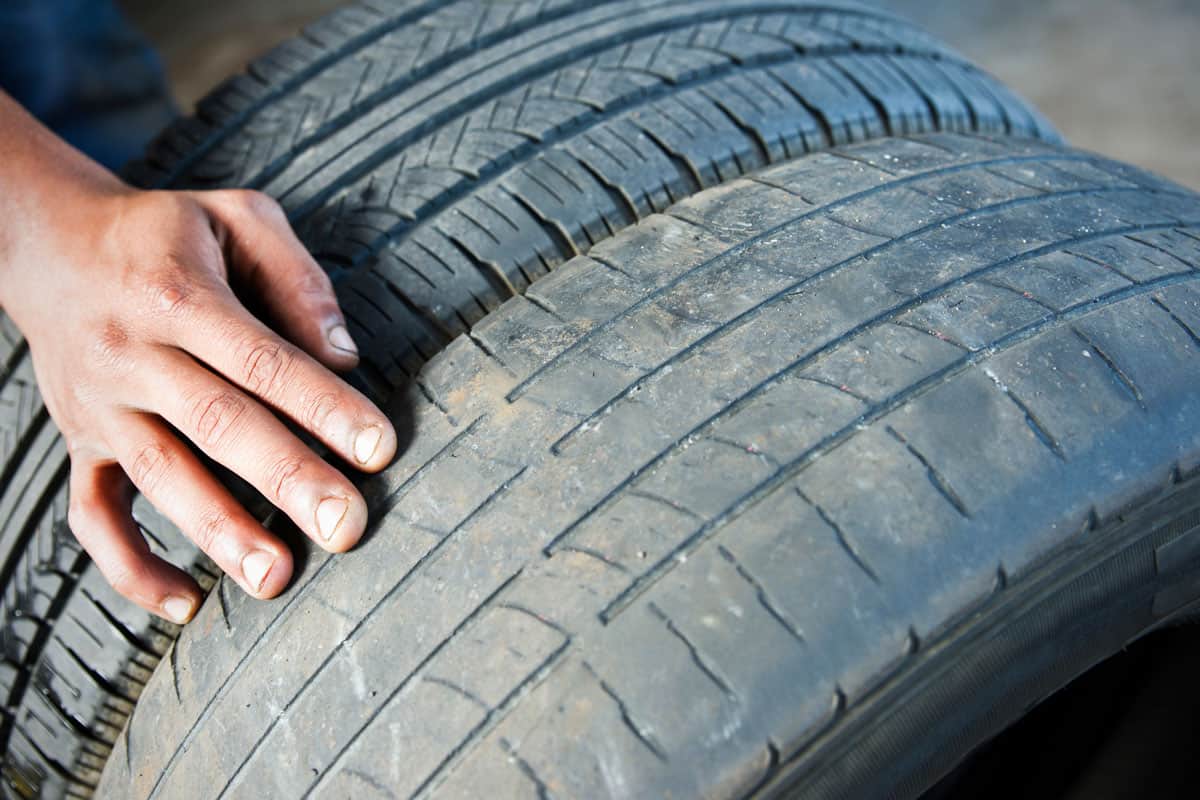
It's important to practice safe driving. This concern is not only for the driver or the passengers but for everyone to be safe on the road. Preventing tire cupping is one of the ways to ensure road safety.
Maintaining the components of your car is another way. Tires should be able to perform properly to deliver peak performance. If your tires are cupping, have the car checked out by a professional to ensure safety on the road.
